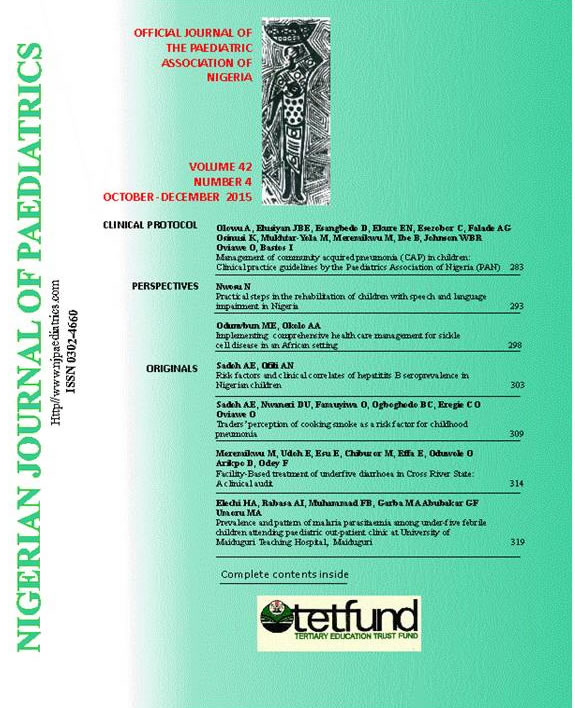Blindness in tuberous sclerosis: Acase report
Abstract
Abstract: Tuberous sclerosis (TS) is inherited as an autosomal dominant trait with variable penetrance characterised by glial cell
tumor which arises from the cerebral and the retina. Blindness in association with Tuberous sclerosis (TS) is rare. When visual loss
occurs it may be associated with hamartomas from retinal or optic nerve involvement or from intracranial (brain) tumours that affect either the part of the brain that processes visual information or from optic nerve damage following raised intracranial pressure. Very few cases of TS with blindness have been reported globally. Deterioration in academic performance might be the first pointer to the visual impairment. We report a case of a 13 year old girl who presented with increasing number of facial rash over an 11years period, recurrent headache and deteriorating academic performance of 1year and loss of vision of 6months with a recent episode of convulsion. Similar skin rashes without other associated symptoms were noticed on the mother and one of the younger siblings. She was a Tanner stage one in development. She had facialangiofibromas, shagreen patches over the left hypochondria, back regions and face. Ophthalmic evaluation showed a visual acuity of being able to count fingers at not more than one meter from the face and only perception of light in the right and left eye respectively, both eyes had brisk pupillary activities, good mydriasis and clear media. The retinal and optic nerve head appeared normal in the right eye whereas in the left eye was a huge tuberous hamartoma of the optic disc and macular as well as generalised vascular occlusion and subretinal fluid.
The Computerized tomography (CT) scan showed an Intraventricular tumour, with calcification within the tumours and subependymal. There was associated obstructive hydrocephalus. Patient was managed by a multidisciplinaryteam of ophthalmologists, neurosurgeons and radiologists, co- ordinated by a paediatrician.
Conclusion: The diagnosis of tuberous sclerosis complex (TSC) was based on the lesions found on clinical examination, imaging, and pathologic studies. The blindness was multi-factorial in cause including intracranial, retinal and optic nerve tumours. Comprehensive medical history, detailed physical examinations and neuroimaging study are essential in making a diagnosis of TSC. Our patient was mis-diagnosed at various health facilities for many years. This delay in making appropriate diagnosis and instituting treatment could have contributed to the eventual outcome.
Keywords: Tuberous sclerosis, blindness, deteriorating academic performance,
Downloads
Published
Issue
Section
License
This is an open-access journal, and articles are distributed under the terms of the Creative Commons Attribution 4.0 License, which allows others to remix, transform, and build upon the work even, commercially, as long as appropriate credit is given to the author, and the new creations are licensed under identical terms

